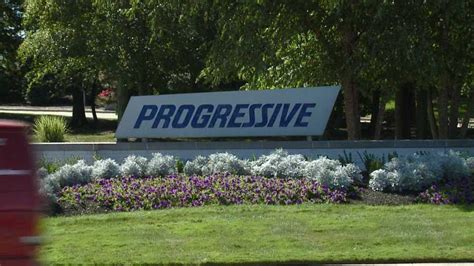What’s the most efficient strength training frequency for peak performance gains?

Unlocking Peak Performance: The Science of Training Frequency
The quest for peak performance in strength training often boils down to a delicate balance of intensity, volume, and perhaps most crucially, frequency. How often should you hit the gym to maximize muscle growth, strength gains, and overall athletic prowess? While many seek a definitive, one-size-fits-all answer, the truth is more nuanced, shaped by individual factors that dictate your body’s capacity for adaptation and recovery.
Understanding the most efficient strength training frequency isn’t about blindly following a program; it’s about optimizing the stimulus-recovery-adaptation cycle to continually challenge your muscles without pushing them into overtraining. Let’s delve into the science behind training frequency and how to tailor it for your ultimate performance gains.

Key Variables: Who Are You as a Lifter?
Your current training status is perhaps the most significant determinant of optimal training frequency. What works for a beginner will likely fall short for an advanced athlete, and vice versa.
Beginner Lifters: The Rapid Adaptation Phase
For those new to strength training, the body is highly sensitive to any novel stimulus. Beginners can see significant gains from full-body workouts performed 2-3 times per week. This frequency allows for sufficient recovery between sessions while providing ample stimulus to all major muscle groups. The focus should be on mastering fundamental movements and building a base, with each session triggering substantial adaptive responses.
Intermediate Lifters: Specialization and Volume
As you progress, your body adapts more readily, and the initial rapid gains slow down. Intermediate lifters often benefit from a higher frequency for specific muscle groups, leading to the adoption of split routines (e.g., upper/lower, push/pull/legs). Training 3-4 times per week, with some muscle groups hit twice, allows for increased weekly volume per muscle group, which is crucial for continued progress. This phase often involves more focused attention on particular areas that may be lagging.

Advanced Lifters: High Frequency and Specificity
Advanced athletes, with years of consistent training, have highly adapted bodies requiring intense and precise stimulus. For them, a higher frequency for specific muscle groups, sometimes training each muscle 2-3 times per week (or even more for very specific goals), can be highly effective. This often involves very sophisticated programming, careful periodization, and meticulous attention to recovery. Total weekly sessions can range from 4-6, sometimes incorporating multiple sessions per day for different muscle groups or types of training.
Beyond Experience: Recovery and Goals
While experience is crucial, other factors play a significant role in determining your ideal training frequency.
- Recovery Capacity: Your ability to recover from training is paramount. Factors like sleep quality, nutrition, stress levels, and age all influence how quickly your muscles repair and grow. Someone with excellent recovery might handle higher frequencies than someone under constant stress or with poor sleep habits.
- Specific Goals:
- Hypertrophy (Muscle Growth): Many studies suggest that training a muscle group 2-3 times per week with adequate volume is optimal for muscle growth, as it maximizes the protein synthesis response.
- Strength: Similar to hypertrophy, moderate to high frequency (2-4 times per week per lift/muscle group) combined with heavy loads often yields the best strength gains.
- Power/Athleticism: Athletes often incorporate highly specific, multi-directional, and explosive training sessions, requiring careful frequency management to avoid burnout and allow for nervous system recovery.

The Importance of Progressive Overload and Deloads
Regardless of frequency, the principle of progressive overload remains king. Your muscles must continually be challenged with greater resistance, volume, or intensity to adapt. Frequency merely provides more opportunities to apply this overload.
Furthermore, incorporating deload weeks or periods of reduced intensity and volume is essential, especially with higher frequencies. Deloads allow your body to fully recover, consolidate gains, and prevent chronic fatigue or overtraining, ensuring sustainable progress over the long term.

Listening to Your Body: The Ultimate Guide
No scientific recommendation can perfectly substitute for listening to your own body. Signs of overtraining, such as persistent fatigue, decreased performance, prolonged muscle soreness, sleep disturbances, or irritability, are clear indicators that your current frequency or intensity might be too high. Conversely, if you feel consistently fresh and ready for more, you might be able to increase your frequency or volume.
Experimentation, combined with objective tracking of your progress, is key. Pay attention to how different frequencies impact your energy levels, strength, muscle growth, and overall well-being. Adjust your schedule based on these observations.

Conclusion: Individualization is Key
The most efficient strength training frequency for peak performance gains isn’t a fixed number but a dynamic variable. It’s a sweet spot that balances adequate stimulus with sufficient recovery, evolving with your training experience, goals, and lifestyle. For beginners, 2-3 full-body sessions per week is often ideal. Intermediates might thrive on 3-4 split sessions, while advanced lifters may benefit from higher frequencies (4-6 sessions) with careful planning.
Ultimately, by understanding your current level, respecting your body’s recovery capacity, and consistently applying the principles of progressive overload, you can fine-tune your training frequency to unlock your personal peak performance potential.







